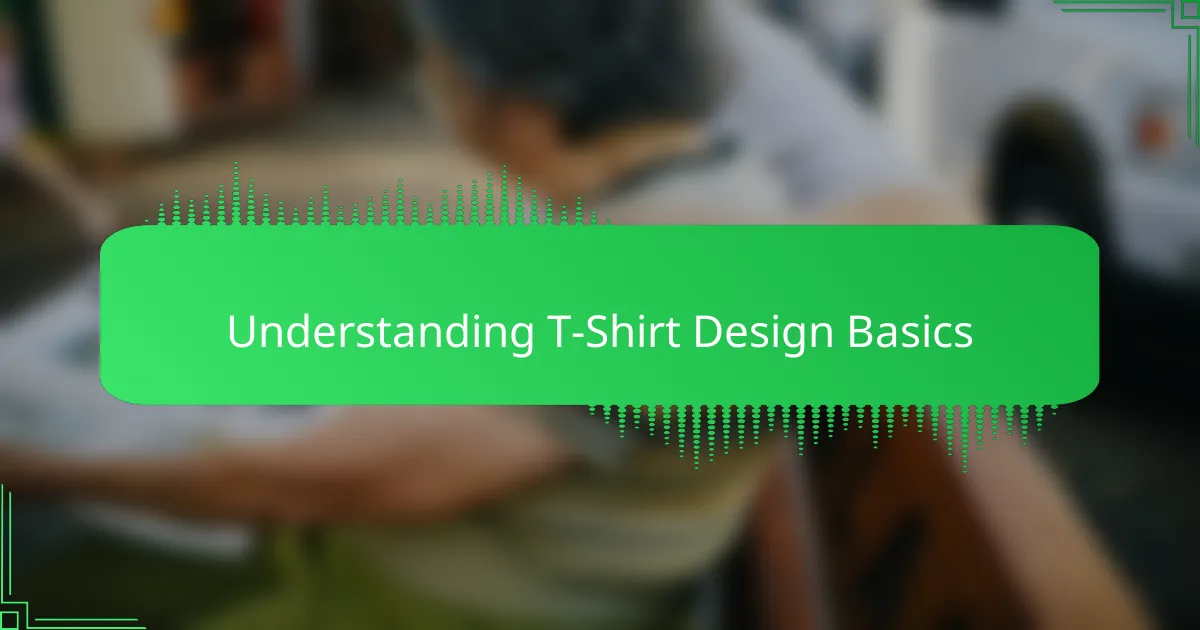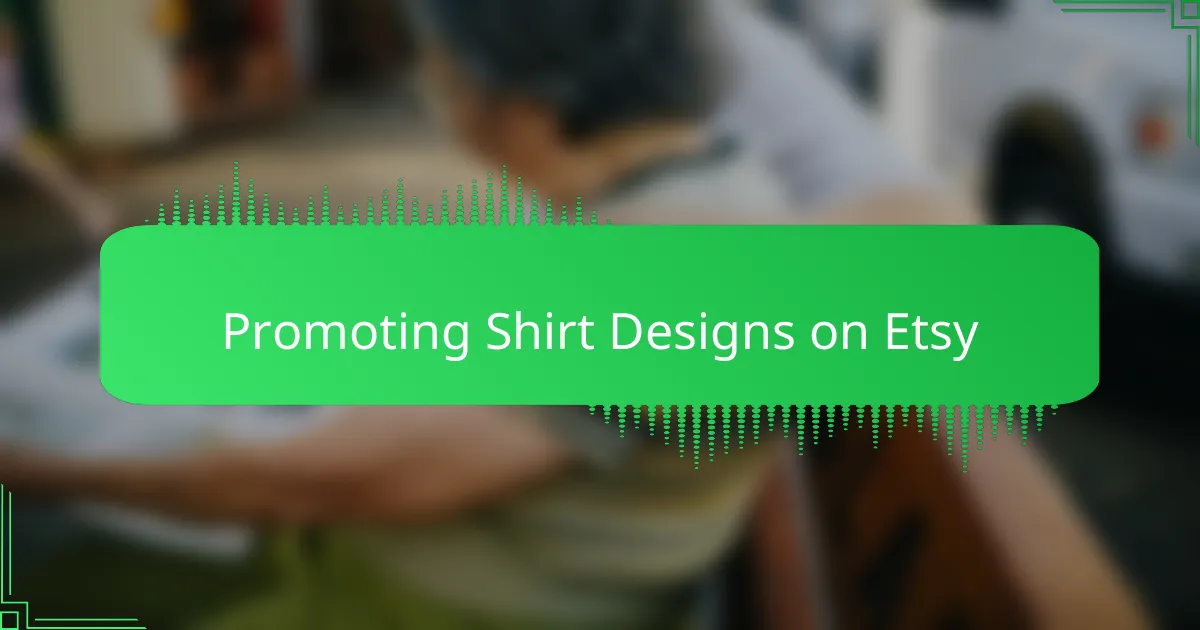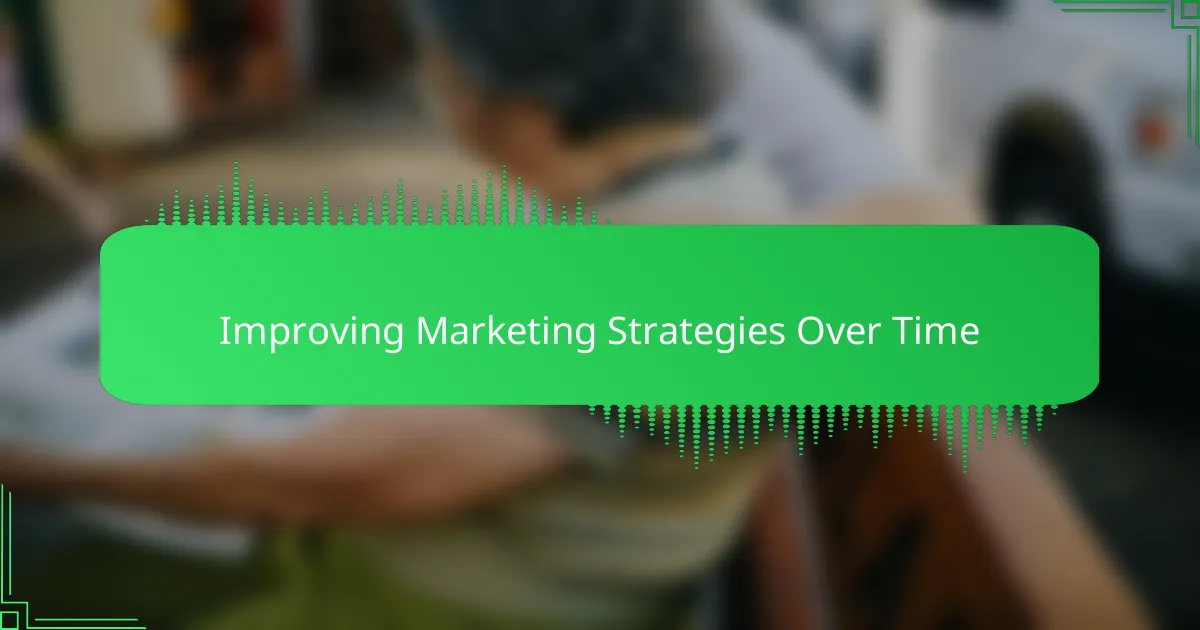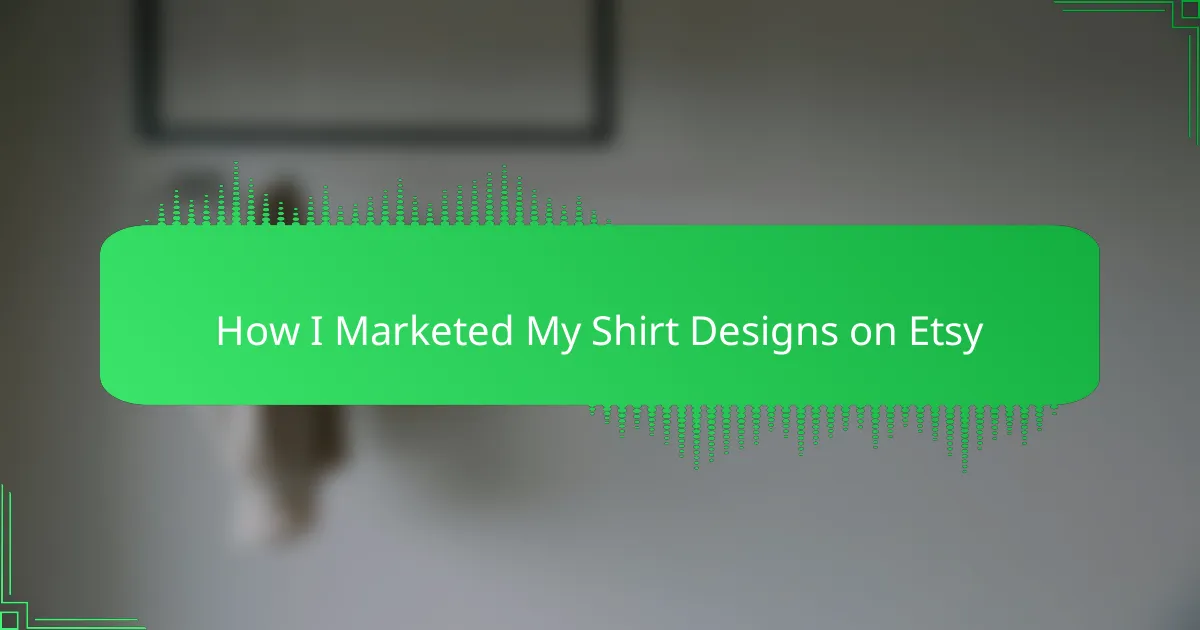Key takeaways
- Success in t-shirt design relies on understanding color theory, simplicity, and creating emotionally resonant graphics.
- Effective Etsy marketing involves optimizing listings with SEO, engaging with customers, and building trust through personal interactions.
- Analyzing sales data and customer feedback is crucial for refining designs and improving marketing strategies over time.
- Continuous adaptation to trends and customer preferences enhances visibility and strengthens buyer relationships.

Understanding T-Shirt Design Basics
Grasping the basics of t-shirt design was a game-changer for me. I quickly realized it’s not just about slapping an image on fabric; it’s about creating something that resonates with people emotionally. Have you ever thought about how a simple graphic can tell a story or spark a memory? That’s the power behind every successful design.
When I first started, understanding color theory was a challenge, but it made all the difference. Choosing the right colors can make your design pop or fall flat—something I learned the hard way. It’s about balance, contrast, and knowing your audience’s preferences, which is more intuitive once you start seeing patterns in what sells.
Another key is simplicity. Overcomplicating designs felt tempting at times, but I found the most popular shirts were often the cleanest and clearest. This taught me to strip away the unnecessary and focus on a strong, memorable concept that can connect with anyone at a glance. Don’t you find that the best ideas are often the simplest? I certainly do.

Introduction to Etsy Marketing
Marketing on Etsy felt like stepping into a whole new world for me. With so many sellers and designs, I wondered, how would my shirts stand out? I quickly learned that Etsy isn’t just about listing products; it’s about connecting with the right audience through storytelling and visibility.
Navigating Etsy’s marketing tools was a bit overwhelming at first. From SEO keywords to promoted listings, each element felt critical but also complex. I discovered that optimizing product descriptions and using targeted keywords made my shirts more discoverable—like giving them a loud voice in a crowded marketplace.
But here’s what surprised me most: marketing on Etsy isn’t just about flashy ads or discounts. It’s about building trust and authenticity through customer interaction and consistent branding. Have you ever received a personal message from a seller? That simple touch can make shoppers feel valued and more likely to come back.

Setting Up an Etsy Shop for T-Shirts
Setting up my Etsy shop for t-shirts was both exciting and a bit daunting at first. Choosing a shop name felt more important than I initially thought—it had to reflect my style and be easy to remember. I wondered, how can one name capture the essence of my designs and still stand out among thousands of sellers? That question kept me brainstorming until I found the perfect fit.
Uploading product listings was where things started to feel real. I quickly learned it wasn’t just about uploading images; writing engaging titles and detailed descriptions was crucial. Did you know that thorough descriptions help buyers trust your product more? Including sizing details and fabric info became my way to connect honestly before any purchase.
One nuance I didn’t expect was customizing my shop policies. Returning to update these felt frustrating at times, but it gave my shop a professional vibe that reassured customers. I realized that clear policies on shipping and returns could actually reduce my stress later by setting expectations upfront—something every new Etsy seller should take seriously.

Creating Effective Shirt Design Listings
Crafting each listing felt like telling a mini story about my shirt design. I found that using clear, descriptive titles that included keywords people search for made my listings easier to find. Ever paused to think how a few well-chosen words can open the door to someone’s shopping cart? That subtle art of wording was something I had to learn by trial and error.
Beyond titles, writing detailed descriptions became my secret weapon. I made sure to share not just what the design looked like, but also the inspiration behind it and the feel of the fabric. It’s amazing how adding those personal touches can make buyers feel connected, almost like they’re meeting the creator behind the shirt.
Photos, of course, had to do their part too. Early on, I underestimated the impact of high-quality images showing the shirt from multiple angles and styled in everyday settings. When I finally invested time in staging my shirts authentically, I noticed a tangible boost in views and sales. It made me realize that every detail in a listing counts toward sparking that initial interest.

Promoting Shirt Designs on Etsy
Promoting my shirt designs on Etsy quickly taught me that simply listing products wasn’t enough. I started experimenting with Etsy Ads, targeting specific keywords related to my niche, and saw firsthand how a little budget could amplify visibility. Have you ever felt like your design deserved more eyes? This approach helped me reach customers who were genuinely interested, not just casual browsers.
Engaging with customers became another cornerstone of my promotion strategy. I made it a habit to respond promptly to inquiries and thank buyers personally—something small but powerful. That personal connection often led to repeat purchases and positive reviews, which, in my experience, are gold on Etsy’s platform.
I also leaned heavily on social media to drive traffic. Sharing behind-the-scenes shots of my design process and customer photos created a community vibe. Wouldn’t you agree that showing the story behind a product makes it more relatable? For me, that storytelling on Instagram and Pinterest turned casual followers into loyal fans who actively sought out my Etsy shop.

Analyzing Sales and Customer Feedback
When I started analyzing my sales data, I realized patterns began to emerge that I hadn’t noticed before. Which designs sold best? Were certain colors or styles consistently outperforming others? Tracking these details helped me make smarter choices on what to create next, turning guesswork into strategy.
Customer feedback was like a window into their minds. Reading each review, I felt connected to the people who wore my shirts. Positive comments boosted my confidence, while constructive criticism pushed me to improve. Have you ever felt that a simple “thank you” from a shopper can brighten your entire day? For me, those messages were motivation to keep refining my craft.
Sometimes, I found that feedback highlighted things I hadn’t expected—like sizing issues or shipping delays—that I could quickly address to improve the experience. I made it a point to respond thoughtfully to every customer comment, which helped build trust and loyalty. Isn’t it amazing how listening closely to your buyers can transform a one-time purchase into a lasting relationship?

Improving Marketing Strategies Over Time
Over time, I noticed that sticking to one marketing tactic wasn’t enough; what worked initially needed tweaking as trends and customer preferences shifted. Did I ever think I’d be adjusting my SEO keywords multiple times or experimenting with different social media approaches? Honestly, it felt like learning to dance with a constantly changing rhythm.
I also found that tracking my shop’s performance regularly was a game-changer. Reviewing which promotions led to actual sales helped me cut what wasn’t working and double down on strategies that truly connected with buyers. Have you ever paused to consider how data can tell a story? For me, those numbers became a roadmap to smarter marketing choices.
Another realization was how important it is to stay flexible and open to feedback. When customers mentioned they found my ads repetitive or my photos could improve, I took it as a chance—not a setback—to evolve my approach. Isn’t growth often disguised as criticism? Embracing that mindset helped me keep my marketing fresh and my designs in front of the right eyes.
